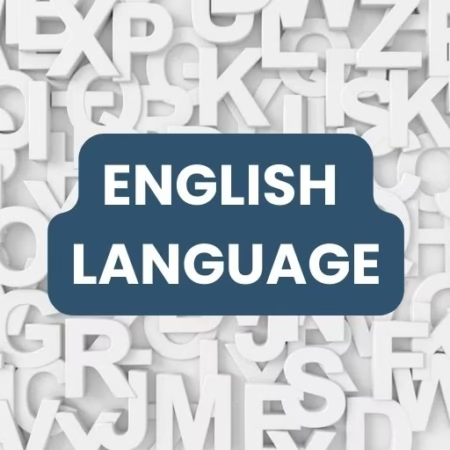This comprehensive guide is designed to help JSS 3 students prepare for their second-term mathematics exams. Each topic is explained simply and thoroughly, with a set of questions for practice. Whether you’re new to these concepts or need to brush up, this article will ensure you’re ready for your exams.
1. Simultaneous Linear Equations – Graphs of Linear Equations
Simultaneous linear equations are equations with two or more variables that are solved at the same time. Graphing these equations is a useful way to find their solutions visually.
Key Concepts:
- Graphs of linear equations: A linear equation can be graphed as a straight line on the Cartesian plane. The point where two lines intersect is the solution to the simultaneous equations.
- Compilation of tables of values: To graph a linear equation, create a table of values by substituting different values of x into the equation to find corresponding values of y.
- Graphical solution of simultaneous linear equations: By plotting two linear equations on the same graph, the point where the lines intersect represents the solution.
Example:
- For the equations y = 2x + 3 and y = -x + 4, plot them on a graph to find where they intersect.
Likely Questions:
- Plot the graph of y = 3x + 2.
- Solve the system of equations by graphing: y = 2x + 1 and y = -x + 4.
- What is the solution of the system of equations y = x + 3 and y = 2x + 1?
- Complete the table of values for the equation y = 2x – 1.
- Plot the graph of y = -2x + 4.
- Solve the system of equations graphically: y = x + 5 and y = 3x – 1.
- Find the point of intersection for the lines y = x + 2 and y = -x + 6.
- Graph the equation y = 4x – 3.
- What does the point of intersection of two lines represent in a system of equations?
- Plot and solve the system of equations: y = 3x – 2 and y = -x + 6.
2. Simultaneous Linear Equations – Solving by Substitution and Elimination
Solving simultaneous equations can be done in several ways, including substitution and elimination. These methods allow you to find the values of the variables that satisfy both equations.
Key Concepts:
- Substitution method: Solve one equation for one variable and substitute this expression into the second equation.
- Elimination method: Add or subtract the equations to eliminate one variable, then solve for the remaining variable.
- Word problems: Real-life problems can often be modeled using simultaneous equations, requiring you to apply substitution or elimination to find solutions.
Example:
- Solve the system by substitution: x + y = 10 and x – y = 4.
- Solve the system by elimination: 2x + y = 8 and x – y = 3.
Likely Questions:
- Solve the system of equations by substitution: 3x + y = 7 and 2x – y = 4.
- Solve the system of equations by elimination: 4x + y = 10 and x + y = 5.
- Use substitution to solve: x + 2y = 8 and x – y = 3.
- Solve the system of equations using the elimination method: 5x – y = 14 and 2x + y = 6.
- Solve the system by substitution: 2x + 3y = 12 and x – y = 4.
- Solve by elimination: 3x + 2y = 9 and x – y = 2.
- Solve the word problem: A movie theater sold 300 tickets for a movie. The adult tickets cost $10, and the child tickets cost $5. If the total revenue was $2,250, how many adult and child tickets were sold?
- Solve the system of equations: 2x + 5y = 16 and x – y = 3.
- Solve using substitution: x + 3y = 11 and x – y = 4.
- Solve using elimination: 4x – 3y = 10 and 2x + y = 7.
3. Variations
Variation describes how one quantity changes in relation to another. There are different types of variations, each with its own method of solving.
Key Concepts:
- Direct variation: When one quantity increases or decreases in direct proportion to another (e.g., y = kx).
- Inverse variation: When one quantity increases while the other decreases in inverse proportion (e.g., y = k/x).
- Joint variation: When a quantity varies directly with the product of two or more other quantities (e.g., y = kxz).
- Partial variation: A combination of direct and inverse variation, where a quantity is affected by both direct and inverse relationships.
Example:
- Direct variation: y = 3x.
- Inverse variation: y = 12/x.
Likely Questions:
- Solve for y in the equation of direct variation: y = 5x when x = 3.
- Solve for x in the inverse variation equation: y = 24/x when y = 8.
- Find the constant of variation for the equation y = kx if y = 12 when x = 3.
- Solve for z in the joint variation equation y = kxz if y = 18, k = 2, and x = 3.
- Write the equation of inverse variation for y = 6 when x = 2.
- Find the constant of variation for y = k/x if y = 4 and x = 2.
- Solve the partial variation problem: y = kx – 3 when x = 4 and y = 9.
- Find the equation of direct variation when y = 20 and x = 4.
- Solve the joint variation equation y = kxz if y = 30, k = 2, and x = 5.
- Write the equation of inverse variation for y = 10 when x = 2.
4. Construction – Bisection of Line Segment and Angles
Construction involves drawing geometric shapes, lines, and angles accurately using a pair of compasses and a ruler.
Key Concepts:
- Bisection of line segments: Dividing a line segment into two equal parts using a compass and ruler.
- Bisection of angles: Dividing an angle into two equal parts using the same tools.
- Construction of triangles and quadrilaterals: Using given measurements to construct triangles and quadrilaterals.
Example:
- Construct a line segment of length 6 cm, then bisect it using a compass.
- Bisect an angle of 60° using a compass and ruler.
Likely Questions:
- Construct a line segment of length 5 cm.
- Bisect a line segment of 8 cm.
- Construct a 90° angle using a compass and ruler.
- Bisect a 45° angle.
- Construct an equilateral triangle with a side length of 4 cm.
- Construct a right-angled triangle given the hypotenuse and one leg.
- Construct a square with side lengths of 6 cm.
- Bisect the angle of 30° using a compass.
- Construct a quadrilateral with given side lengths.
- Bisect a line segment of 10 cm.
5. Similar Shapes – Similar Figures and Triangles
Similar shapes are figures that have the same shape but may differ in size. Understanding how to work with similar shapes is important for solving various geometric problems.
Key Concepts:
- Similar figures: Figures that have the same shape but are not necessarily the same size.
- Similar triangles: Triangles with the same angles and proportional sides.
- Enlargement and scale factor: Changing the size of a figure while keeping its shape, using a scale factor.
Example:
- Two triangles are similar if their corresponding angles are equal and their corresponding sides are proportional.
Likely Questions:
- Are the triangles with sides 3 cm, 4 cm, and 5 cm similar to triangles with sides 6 cm, 8 cm, and 10 cm?
- If two figures are similar, what can you say about their corresponding angles?
- What is the scale factor for an enlargement from a 2 cm by 3 cm rectangle to a 4 cm by 6 cm rectangle?
- If two triangles are similar, and one has sides of length 4 cm, 5 cm, and 6 cm, what are the corresponding sides of the other triangle if the scale factor is 2?
- Determine the scale factor for two similar rectangles, one with dimensions 3 cm by 4 cm and the other with dimensions 6 cm by 8 cm.
- Prove that two triangles are similar by showing their corresponding angles are equal and sides proportional.
- Calculate the scale factor of two similar shapes: one has a length of 4 cm and the other 8 cm.
- Identify the corresponding angles in two similar figures.
- Solve for the missing side of a similar triangle using the scale factor.
- Explain the relationship between similar shapes and proportionality.
6. Similar Shapes – Scale Factor in Calculating Lengths, Areas, and Volumes
Once you understand how to find the scale factor for similar shapes, you can use it to calculate lengths, areas, and volumes of similar figures.
Key Concepts:
- Length: Use the scale factor directly for corresponding lengths of similar shapes.
- Area: The area of similar shapes is proportional to the square of the scale factor.
- Volume: The volume of similar solids is proportional to the cube of the scale factor.
Example:
- If two similar rectangles have a scale factor of 2, then the area of the larger rectangle is 4 times the area of the smaller rectangle.
Likely Questions:
- If two squares are similar and their sides have a scale factor of 3, what is the ratio of their areas?
- Find the area of a larger rectangle if the scale factor is 5 and the area of the smaller rectangle is 20 cm².
- Calculate the volume of a larger cube if the scale factor is 2 and the volume of the smaller cube is 8 cm³.
- What is the area of a larger triangle if its scale factor to a smaller triangle is 4?
- Find the volume of a larger cone if its scale factor to a smaller cone is 3 and the volume of the smaller cone is 10 cm³.
- Use the scale factor to find the length of a side of a similar shape.
- How does the scale factor affect the area and volume of similar shapes?
- Calculate the area of a circle when the radius of the larger circle is double that of the smaller circle.
- What is the scale factor for two similar spheres, where the volume of the larger sphere is 27 times the volume of the smaller sphere?
- Solve for the area of a similar figure using the scale factor.
7. Measurement of Solids – Area, Surface Area, Volume
Understanding the measurement of solids is important for solving real-life problems involving 3D shapes like cubes, cuboids, cylinders, and cones.
Key Concepts:
- Area of solids: The surface area of a solid is the total area of its outer surface.
- Total surface area of a cube and cuboid: Use the formula to calculate the surface area of these solids.
- Curved surface area of cylinder and cone: The curved surface area does not include the top or bottom faces.
- Volume: The amount of space occupied by a solid.
Example:
- Volume of a cube = side³.
- Volume of a cylinder = πr²h.
Likely Questions:
- Calculate the surface area of a cube with side length 4 cm.
- Find the volume of a cuboid with dimensions 5 cm by 6 cm by 7 cm.
- Determine the curved surface area of a cylinder with radius 3 cm and height 5 cm.
- Find the total surface area of a cone with radius 2 cm and slant height 5 cm.
- Calculate the volume of a cone with radius 3 cm and height 8 cm.
- What is the total surface area of a cuboid with dimensions 4 cm by 3 cm by 2 cm?
- Find the volume of a cylinder with radius 4 cm and height 10 cm.
- Calculate the volume of a cube with side length 6 cm.
- What is the relationship between volume and capacity?
- Find the volume of a cone with radius 3 cm and height 6 cm.




